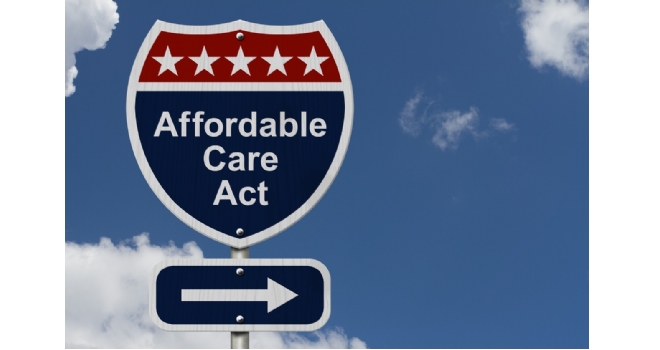Supreme Court to Consider the Constitutionality of the ACA: A Listener’s Guide to Texas v. California

Exactly one week after election day, the Supreme Court will hear oral arguments in Texas v. California—the second constitutional challenge to the Affordable Care Act (ACA) to reach the Court. Eight years ago the Court upheld the ACA’s individual mandate by a 5-4 margin in National Federation of Independent Business v. Sebelius (NFIB), and since then the Supreme Court has been changed by the Trump Administration’s appointment of Justices Gorsuch, Kavanaugh, and Barrett. Although oral arguments often are not a reliable indicator of how the Court will rule, they can provide some indication as to which Justices are focused on certain issues and what that could mean for the ultimate decision. This article provides an overview of the three main issues—whether the ACA’s challengers have standing, whether the Individual Mandate (Section 5000A of the ACA) is constitutional, and whether the Court can and should cut or sever a portion of the ACA—and serves as a listener’s guide for Tuesday’s oral argument.
Brief Background
In 2017, Congress passed the Tax Cuts and Jobs Act (TCJA), which reduced the shared responsibility payment to $0, effective January 1, 2019. Because the TCJA was adopted as reconciliation legislation, Congress could not eliminate the individual mandate entirely. Rather, it amended section 5000A of the Internal Revenue Code to eliminate the shared responsibility payment. Previously, the Court in NFIB held the ACA’s individual mandate was a lawful exercise of Congress’s taxing power. Following enactment of the TCJA, 20 states, led by Texas, sued the federal government, arguing the individual mandate is unconstitutional without the associated tax and that the ACA as a whole must be struck down. (Wisconsin and Maine withdrew from the case following the 2018 mid-term elections, leaving 18 challenger states.) The challenging states were joined by two self-employed residents of Texas who claim they, too, are injured by the individual mandate because the law requires them to purchase health coverage even if there is no penalty for failing to do so. Meanwhile, another 17 states—led by California—and the United States House of Representatives have intervened to defend the ACA.
Since 2018, the federal government has not defended the constitutionality of the ACA’s individual mandate, but has varied with respect to its views on its severability from the rest of the ACA. In federal district court, the federal government identified particular provisions of the ACA (including protections for people with pre-existing conditions) that should be struck down along with the individual mandate. The federal government now argues, however, that the entire ACA should be struck down as inseverable from the individual mandate, but that relief should be confined to enforcement of the ACA provisions that injure the individual plaintiffs.
Key Issues
The key issues before the Court are (1) the standing of the challenging states and individual plaintiffs, (2) the constitutionality of the individual mandate in the absence of a tax penalty, and (3) the severability of the remainder of the ACA if the individual mandate is ruled unconstitutional. The ultimate breakdown of decisions on each issue could be complicated, with different justices comprising the majority and minority on the different issues.
1. Does Any Challenger Have Standing?
- Yes: The Court will address the merits of the case (move on to Question 2).
- No: The case will be dismissed and the ACA will remain fully in force without the necessity of reaching the remaining questions.
A threshold question will be whether any plaintiffs (i.e., one of the 18 challenging states or two individual plaintiffs) can demonstrate a “legally cognizable injury” sufficient to establish Article III standing. At the 5th Circuit, the majority held that being required to purchase health insurance and the time and money spent to comply with the individual mandate were sufficient to establish the two individual plaintiffs’ standing. However, the dissent noted that there is no injury because “absolutely nothing” would happen to the plaintiffs if they did not purchase health insurance. If no plaintiff has standing to challenge the ACA, then the case will be dismissed and the ACA will remain in force. Observers will listen to see which justices focus on whether the individual mandate results in any injury in fact without the shared responsibility payment.
It is also possible that a justice might address the question of whether the states that intervened to defend the ACA or the U.S. House of Representatives have standing to appeal the case. The 5th Circuit concluded that the intervening states have standing because they would lose funding if the ACA is overturned and an adverse judgment could harm these states in future litigation. The parties have not raised this issue before the Court, and the Court has not asked for briefing on this issue.
2. Is the Individual Mandate Constitutional Without the Tax Penalty?
- Yes: The case will be dismissed and the ACA will remain fully in force.
- No: The Court will address severability (move on to Question 3).
If the Court reaches the merits, it must determine whether Congress has unlawfully exceeded its constitutional authority by adopting an individual mandate to purchase health coverage unconnected with a tax penalty. In the 5th Circuit, the majority held that, after eliminating the tax penalty, the individual mandate does not produce any revenue and cannot be a lawful exercise of Congress’s taxing authority under NFIB. The dissent, however, concluded that the real question is not whether the now $0 penalty is a tax; instead the question is whether “Congress exceeds its enumerated powers when it passes a law that does nothing.” In short, because the statute does nothing to compel individuals to purchase insurance, Congress has not exercised its legislative power at all.
Following the re-shaping of the Court under the Trump Administration, observers will listen for indications that Justices Gorsuch, Kavanaugh, and Barret would be inclined to conclude that the individual mandate is unconstitutional with or without a tax. Justices Thomas and Alito joined Justice Scalia’s dissent in NFIB, indicating they would have ruled the individual mandate is unconstitutional even with the tax penalty and would have invalidated the entire ACA on this basis. If there are now five justices that would take this view, then this would mean that the only legislative solution available to preserve the ACA would be to repeal the individual mandate as a whole (rather than a mere restoration of the tax penalty).
3. If the Individual Mandate is Unconstitutional, is it Wholly or Partially Severable from the Rest of the ACA?
- Wholly Severable: The remainder of the ACA will continue in force without the individual mandate.
- Entirely Inseverable: The ACA would be struck down in its entirety.
- Remand: If the Court does not determine that the individual mandate is wholly severable or inseverable from the rest of the ACA, it will likely remand for further analysis by the district court.
The severability analysis focuses on whether the rest of the ACA remains constitutional even if the individual mandate is not. The Court has recognized a “strong presumption of severability” and would look at two questions in determining severability: (1) Are the constitutional provisions are fully operative as law? (2) Would Congress have enacted the remaining provisions without the unconstitutional portion? If Congress would not have enacted those provisions, then they are inseverable. In analyzing this question, the defending states and the U.S. House will focus on Congress’s intent in passing the TCJA in 2017, while the federal government and challengers will focus on Congress’s intent in passing the original ACA in 2010. The question of which Congress’s intent is important because the repeal of the tax penalty in 2017 reveals an evolution in Congress’s intent from 2010 to 2017.
Questioning may also focus on the wide range of ACA provisions that are seemingly unrelated to the individual mandate and the ACA’s market reforms. An emphasis on the ACA’s complexity and its inclusion of widely varying provisions might indicate support to affirm the 5th Circuit’s decision and remand the matter to the district court for a more detailed severability analysis. This approach could then result in a second round of appeals (absent an intervening legislative solution).
Timing and Legislative Solutions
In theory, the Supreme Court could issue a decision in this case at any time following oral argument, but it is likely that a decision will not be issued for some time—potentially late-June 2021. Once President-Elect Joe Biden takes office, however, Congress could act to preserve the ACA. There are two potential legislative solutions available:
(1) Restore the Tax Penalty. Congress could restore the individual mandate’s tax penalty, using the dollar amounts in place before the 2017 amendment or a different amount. Although this could be done with 50 votes (and the Vice President’s vote) in the Senate through reconciliation legislation, this approach may not be tenable depending on the outcome of remaining Senate races. In addition, this legislative solution, which relies on the Court’s decision in NFIB , might not pass muster before the reconfigured Supreme Court.
(2) Repeal the Mandate. Alternatively, Congress could repeal the individual mandate as a whole. This approach would necessitate a filibuster-proof majority in the Senate, but in light of the extraordinary criticism of the individual mandate by Republican Senators over the past ten years, a bipartisan repeal of the mandate might be feasible. Elimination of the individual mandate would avoid any further challenges to its constitutionality.
Congress could pursue either strategy for preserving the ACA before or after the Supreme Court’s decision in Texas v. California. But, adoption of a legislative solution before the Court issues its decision would moot the appeal, allowing the Court to avoid deciding the case altogether.
For further information, please contact Katrina Pagonis or Jeffrey Lin in San Francisco, or your regular Hooper, Lundy & Bookman contact.
